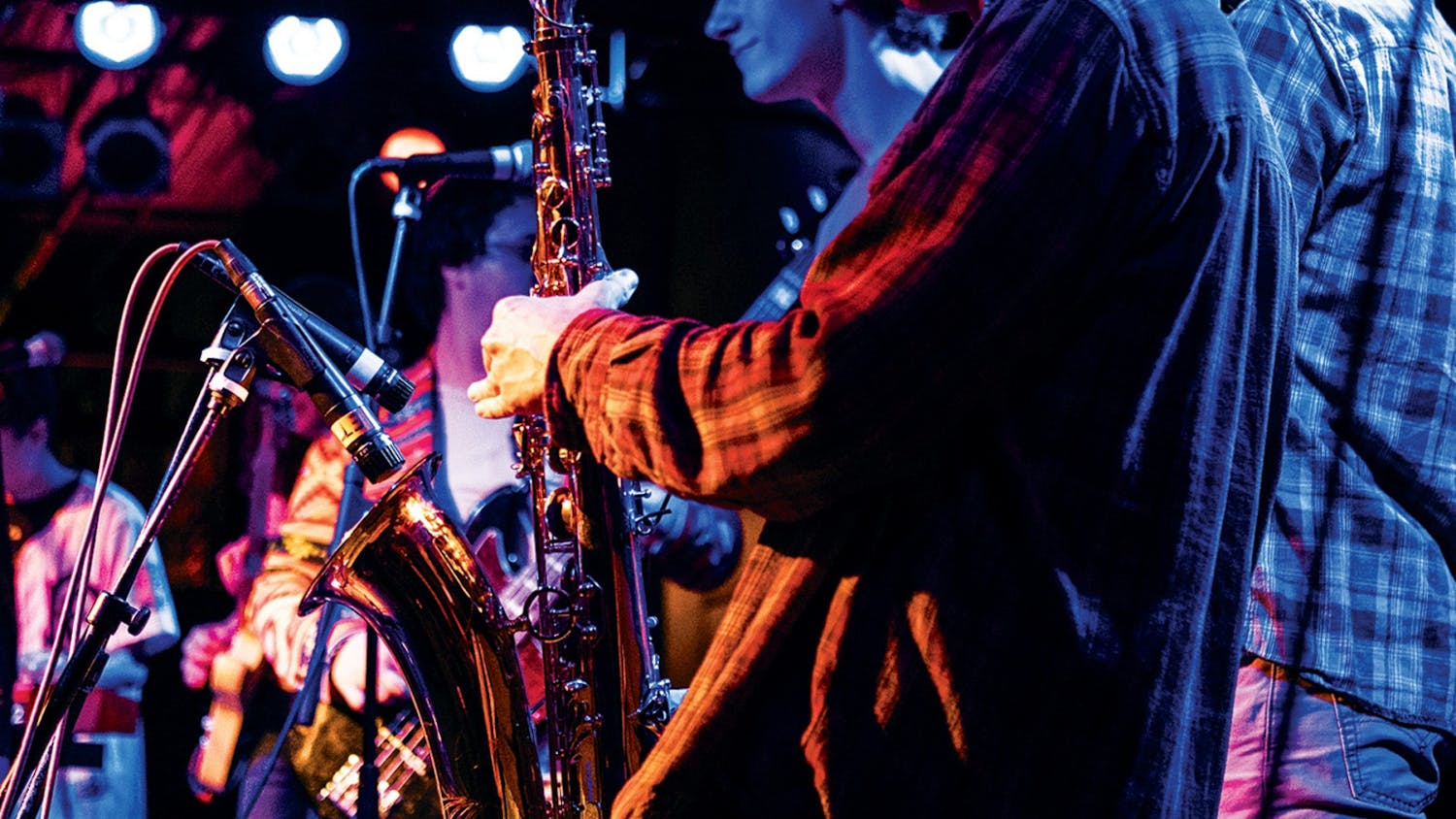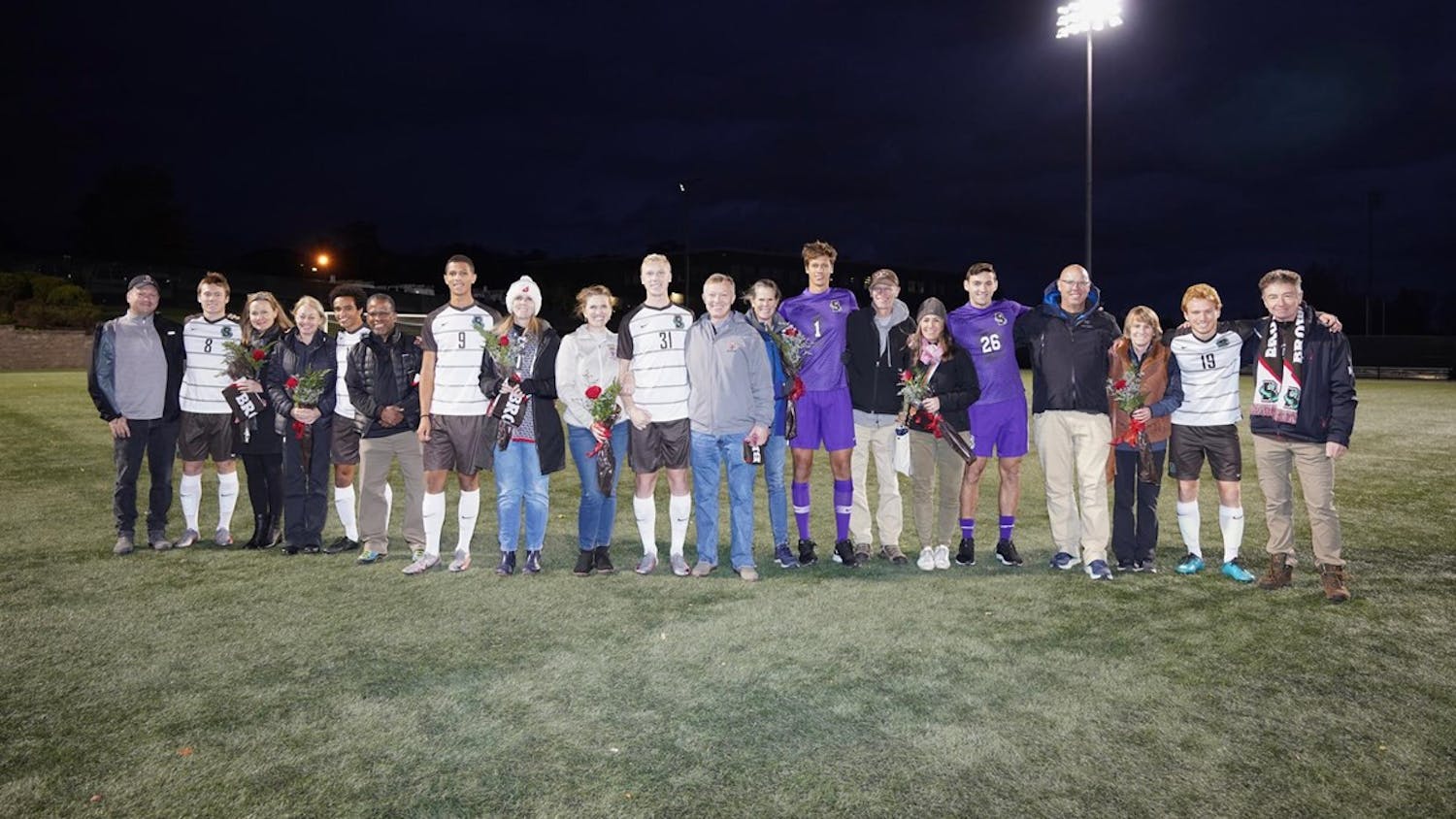The atmosphere around Valentine’s Day at Brown varies from students using web tools to meet matches to clubs planning events.
For a generation that grew up on Facebook, Twitter and smartphones, traditional romance and courtship can seem like a thing of the past. But this year on Valentine’s Day, Brown students have more than one medium to express their love.
‘Breaking the ice’
Launched in October 2012, Tinder is an app for smartphones that has taken campuses by storm. Users create a profile linked to their Facebook accounts, allowing photos, interests and friends to be revealed to potential romantic matches. Based on those common factors, the app suggests profiles of people within a certain mile radius — from 10 to 100 miles — that users can choose to “like.” If both parties “like” each other, Tinder allows them to begin a conversation.
“We are in every major city in the U.S. and hugely popular on college campuses,” wrote Rosette Pambakian, a publicist for the company, in an email to The Herald, adding that Tinder has facilitated over 10 million matches so far.
“It became the liaison between you and that person you always wanted to talk to,” said Tanner Larson ’15, a campus ambassador for the company. The app was founded in California and has been successful at west coast schools like University of Southern California, said Jordan Mandelbaum ’15, head representative for the company at Brown. Brown and Boston University were used as test schools on the east coast, and from there the app has “exploded,” he said.
Cupid’s arrow astray?
Though Tinder has quickly gained popularity, users have scrutinized its moral implications.
“The whole idea of courtship could fall out with the app,” Mandelbaum said..
Because users only see a picture of a potential match — and few other details about them — the matching “can be seen as shallow,” Larson said. “You don’t have to talk to the person though, so it’s very non-committal.”
But many students who use Tinder do not view the app as an avenue for a serious relationship.
“I’ve never heard of someone being in a successful relationship from Tinder,” said Reid McDuff ’16. “I’ve heard of some people hooking up but never a relationship.” McDuff has a Tinder account but said he only uses it “as a joke.” He said his friends “start weird conversations and are generally messing with other users.”
Since anyone can join the app, there is a risk of encountering less than desirable strangers. Eligible members need only meet three parameters — they must be 18, have a Facebook profile and live within the designated mile radius.
Monica Kim ’16 created a profile on Tinder and has received messages that made her feel uncomfortable, she said. “Sometimes when people chat me, I don’t respond. And they keep harassing me with chats,” she said.
People do not use Tinder to find relationships, she said, adding that “there are like 50-year-old men on there.”
McDuff also said he and friends have encountered some questionable characters on the app. “I’ve had some creepy followers that my friends and I accidently liked — people way older than us,” he said. “Then we had to block them.”
While Larson acknowledged that sometimes the app could seem “creepy,” he said Tinder is tailored to user preferences, adding that “people have met their matches in real life and have had a great time.”
For Brown students, the app has not yielded as many successful results as at other universities — particularly Southern schools, Mandelbaum said. He said Brown has been a difficult market for the app because students here are “set on the type of culture they want.”
Secret admirers
Another digital interface recently created in the spirit of romance is the Facebook page “Brown Admirers,” hot on the heels of another anonymous forum, “Brown Compliments.” “Brown Admirers” allows students to post details about a crush or someone they admire, tagging the person in the post without revealing their own identities.
Posts on the page range from meaningful declarations to witty innuendos targeted at specific people.
Giulia Nicita ’15 was tagged in a post last week — the message said the sender would “fly to Italy with her and back anyday.” Though Nicita thought the message was comical, she still doesn’t know who posted it.
“Now every acquaintance I interact with I think ‘hmm, could it be you?’” she said.
Hooking up
A Herald poll conducted in the fall found that 24.8 percent of Brown students are in an exclusive relationship with one other person, and 56 percent of students expressed interest in being in a monogamous relationship. Contrary to these data, many students still perceive a strong “hook-up” culture on campus.
“I think here we definitely do not have a relationship culture. It seems to be more about hook-ups,” Kim said.
Nicita said most of her friends are not in relationships and instead opt for hook-ups. She said she only knows of one of her friends being in a “good relationship,” which started in class.
Age also appears to be a factor for students seeking relationships.
“As you gain more experience and interact with more people, the chance of you building a relationship grows,” said Hiuwai Lee ’13, adding that more upperclassmen seem to be in relationships than first-years. Student plans for Valentine’s Day vary based on their relationships. Though many are without a significant other, they are still looking for ways to have fun.
Maria Bugane ’16 said she will be working at the Ratty but plans to send a friend a singing valentine.
“It’s a good time to show a friend you care about them — not so much declarations of love,” she said.
ADVERTISEMENT




